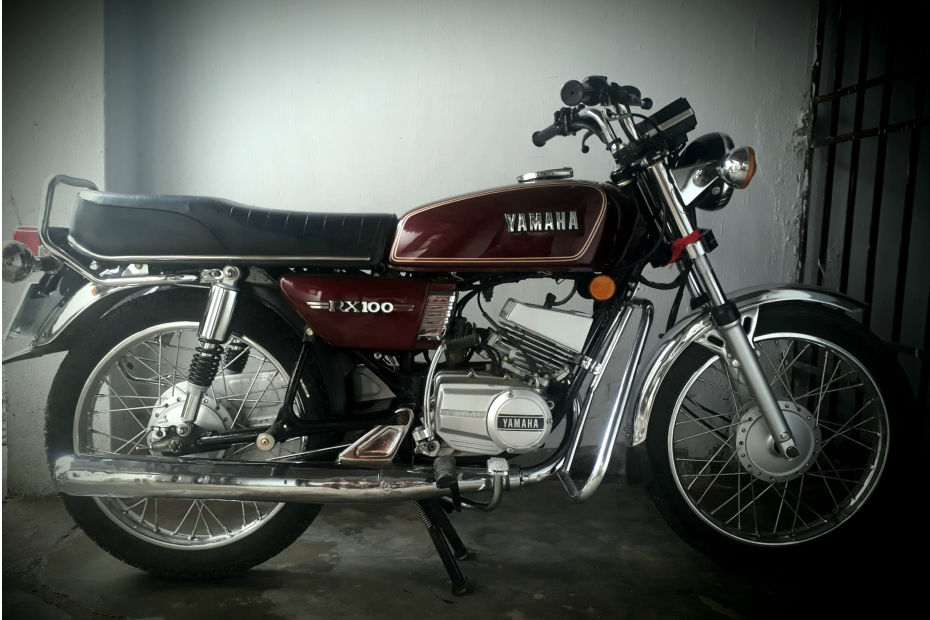Motorcycle Icons - Yamaha RX 100
Modified On Jul 21, 2022 06:52 PM By Jehan Adil Darukhanawala for Yamaha RX100
- 4886 Views
- Write a comment
A tale of a two-stroker that to this day is one of the most sought after motorcycles in the country

[UPDATE: Yamaha has confirmed that the RX100 will be coming back to India. Check out the new details in our report]
The Indian two-wheeler market is, and always has been, predominantly filled with utilitarian motorcycles. But if we peer back through the century-old annals of Indian motorcycling history, we can see that we have been blessed with some truly special motorcycles. These were the ones to break all convention, stand apart from the crowd and become true icons over the years; icons which are pined for even today. With this series, we aim to identify these icons that have been on many dream garage lists, starting with one of the most recognisable faces of the Indian motorcycling scene of the 1980s and 90s: the Yamaha RX100.
Shortly after the Escorts Rajdoot 350 was introduced in India, the Yamaha RX100 followed suit. The Rajdoot 350 (or more commonly known as the RD 350 in other parts of the world) was a motorcycle unlike anything India had ever seen before. Its twin-cylinder, two-stroke motor produced incredible power, a bit too much for Indian enthusiasts to handle back then. Plus, the high asking price, low fuel-efficiency and high maintenance costs meant the RD 350 did not become a household name.

The RX100 on the other hand did. It was very much a chip off the old block in many ways. But the two-stroke motor managed a humble 11PS. Thanks to its pint size proportions and dry weight of 95kg though,the RX100 was a quick motorcycle. The company-claimed 0-60kmph figure of 7.5 seconds might not sound that impressive in this day and age, as even commuter motorcycles of today like the TVS Radeon and the Bajaj Platina 110 H-Gear are able to match the figure. However, for a motorcycle with early eighties technology and metallurgy, 7.5 seconds is quite a decent figure. It raced past larger capacity motorcycles of that era with ease. The Yezdis were heavier and the Enfields with their four-stroke, long-stroke configuration could never be able to keep up in their stock form. It zoomed past in a cloud of blue smoke which left them smelling unburned petrol, 2T oil and embarrassment.
Also in the 1980s, Hero Honda was looking to offer an economical alternative to Indian commuting needs. While the Hero Hondas served their purpose well, they were simply nothing like the Yamaha. The scale at which the RX 100 was able to spread its insanity among the masses was something that even the RD 350 couldn’t quite match. . It was loud, smelly, fast and it gave power to the people. Nothing else topped that!
The RX100 opened up a lot of avenues for people who were looking to go very fast very quickly. Suddenly, it was no longer just the race tuners who were going on about redesigning expansions chambers, engine porting or experimenting with final drives to go faster; it was also the just-turned-legal college goer who was looking to make sure his/her RX was different than the stock one.

Its popularity was heightened when people started using the bike for motor racing. It was the belle of the ball at drag meets across the country. At the last Valley Run drag meet, held in December 2019, the quickest RX100 clocked a 0-400m time of 13.42 seconds. At the same meet, the quickest KTM 390, a bike with four times the power in stock trim, did the same run in 12.56 seconds.
The RX100 was very much one of the easiest bikes to get onto in supercross racing. Its distinct power-to-weight advantage made it a runaway success in the sport. It was fairly cheap to repair and spares were easy to find. It was only very recently that novice riders started looking out for a more competent setup to begin with, like the Hero Impulse.

In March 1996, Escorts Yamaha pulled the plug on the RX100. Its successors like the RXG and the RX135 didn’t tug at the heartstrings like the RX100 did. The RX100 was one of the last embers of the flame of India’s love affair with two-stroke performance until the era of the four-stroke performance bikes dawned. The likes of the Hero Honda CBZs, the Bajaj Pulsars and the TVS Apaches picked up where the RX100 left off. Emission laws ultimately killed the two-stroke engine and with that the RX chapter in India. And although Yamaha did try to slap on those two hallowed letters onto its Saluto commuter motorcycle, it never was going to live up to the name.
We will be sticking to Escorts Yamaha for our next iconic motorcycle as well, the RD 350.
Image credits: Elite Octane, WikiCommons
